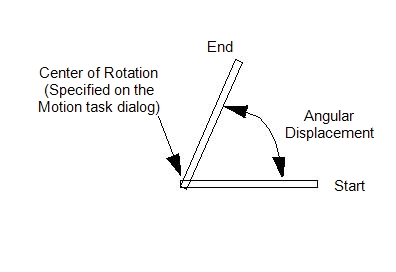Defining User-Prescribed Angular Motion
When an object moves according to a fully-prescribed angular motion, it does not react to the flow. The object rotates in the specified direction at the prescribed angular velocity.
To open the Motion Editor:
- On the Motion quick edit dialog, set the Type to Angular, and uncheck Flow-Driven.
- Click Edit on the Edit Motion line.
To Define User-Prescribed Angular Motion
The Angle which the object sweeps is the only property for user-prescribed angular motion.
- Select the Variation Method.
- Enter the appropriate values.
- Click Apply.
- Click OK.
Angle Variation Methods
Constant
Enter the Angular Speed at which the object will rotate throughout the analysis. The units pull-down menu allows selection of either radians per second or RPM.
Oscillating
This method causes the object to oscillate angularly through a prescribed angle, in a specified time.
The Half Period Time is the time it takes the object to rotate from the start position to the end position of the angular displacement.
The Angular Displacement is the included angle of the stroke:

Table
The table allows for specification of an angular position at specific times.
The Angle is relative to the Initial Position prescribed on the Motion task dialog.
Enter Angle and Time data into the table.
Check the Cyclical box to repeat only forward sweeps through the angle table.
Check the Reciprocating box to repeat forward and reverse sweeps through the angle table.